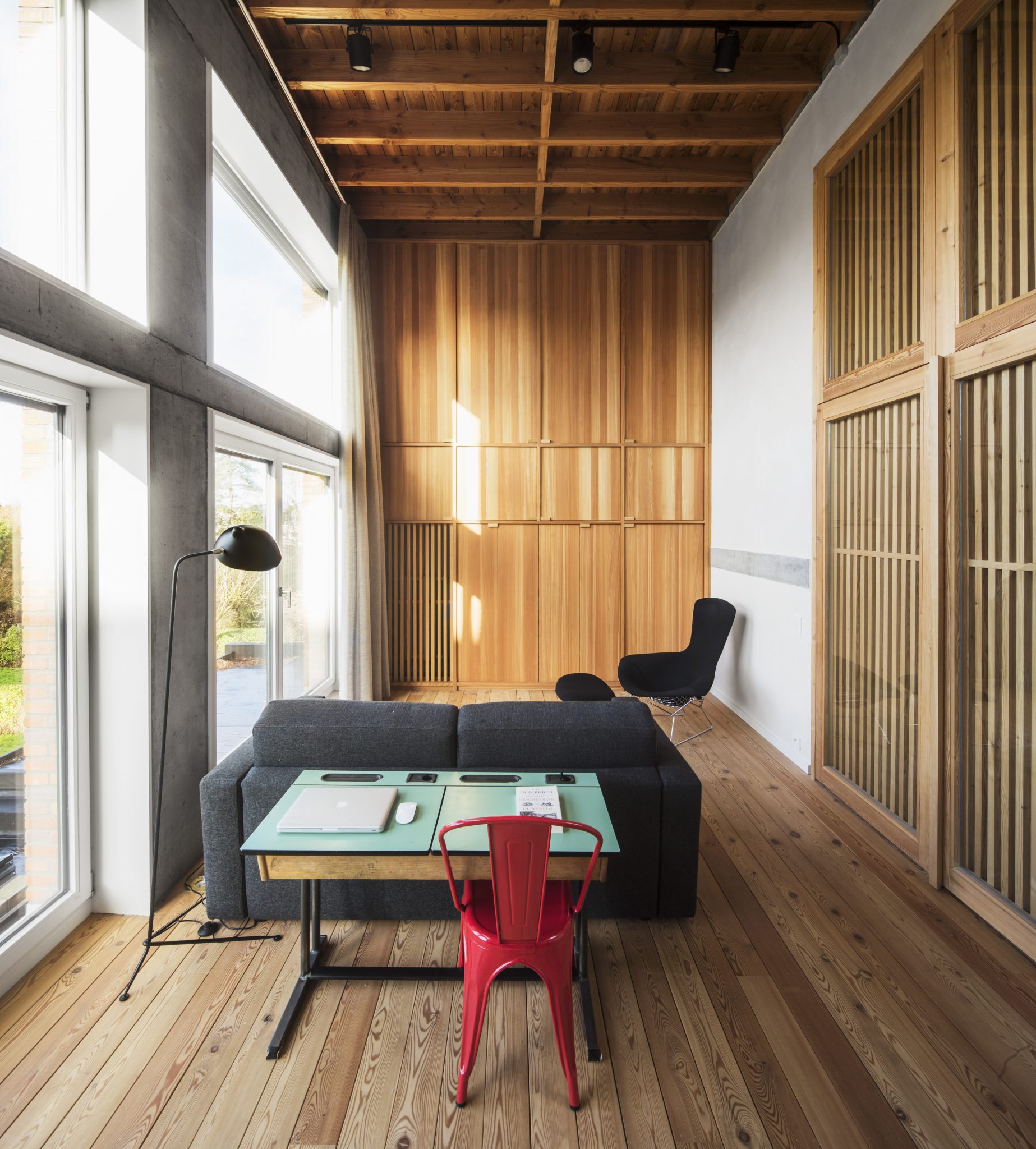
Inner peace
A house made for us
Kris, Leen and their daughter Alice love living in the city: everything is close by and you can cycle everywhere. When they bought a house near Ghent railway station, rather than do the obvious thing and renovate, they chose to knock it all down. It was a decision that raised a few eyebrows. “We didn’t like the structure of the existing house and anyway it would have been difficult to make it an energy-efficient passive home,” Kris explains. “We therefore decided – together with our architect Bart Biermans from the HUB architectural firm – to start from scratch.”
Almost energy-neutral
“It’s important for us to be able to breathe healthy air even in the city,” Kris adds. “When we bought our house in 2011, we explored all the possible options for building in the most energy-friendly way possible. We kept that in mind at every stage of the project. For example, the building shell had to be not only windproof but also airtight, with no cold bridges. The glazing is super-insulating: the three layers of glass let nothing through. We opted for electric underfloor heating powered by a solar water heater and solar panels. The water for the toilets and the washing machine comes from our 10,000 litre well, which sits under the patio. So we’re delighted that we’ve managed to be almost energy-neutral. At the moment our utility bills are about 70 euros a month on average, but we’ll keep looking for ways to bring that down to zero at some point in the future.”
Breathe freely
The choice of clay plaster (“loam plaster”) is surprising. “People mainly associate it with a rural decor, but again it was an informed decision,” Kris explains. “Clay plaster is an ecological plastering material. But that’s not all. As just mentioned, we gave careful consideration to the question of acoustics. Our ceilings are quite high, and we also have large expanses of glass and a concrete floor: ideal conditions for creating echoes, which is something we wanted to avoid. But also our experience of living in a town house in Aalst meant that we would give anything for some peace and quiet at home – in other words, without having to put up with noise from the street or the neighbours. Another thing is that clay, or loam, helps control air humidity. I have sensitive airways and dry air soon irritates them: here we have 54% air humidity, which is almost ideal. It’s not only a pleasant house to live in, but a healthy one too.”
Would you like to find out more? Sign up here for our magazine Mature, which contains a detailed report on this project.
Do you like our work?
Contact us

